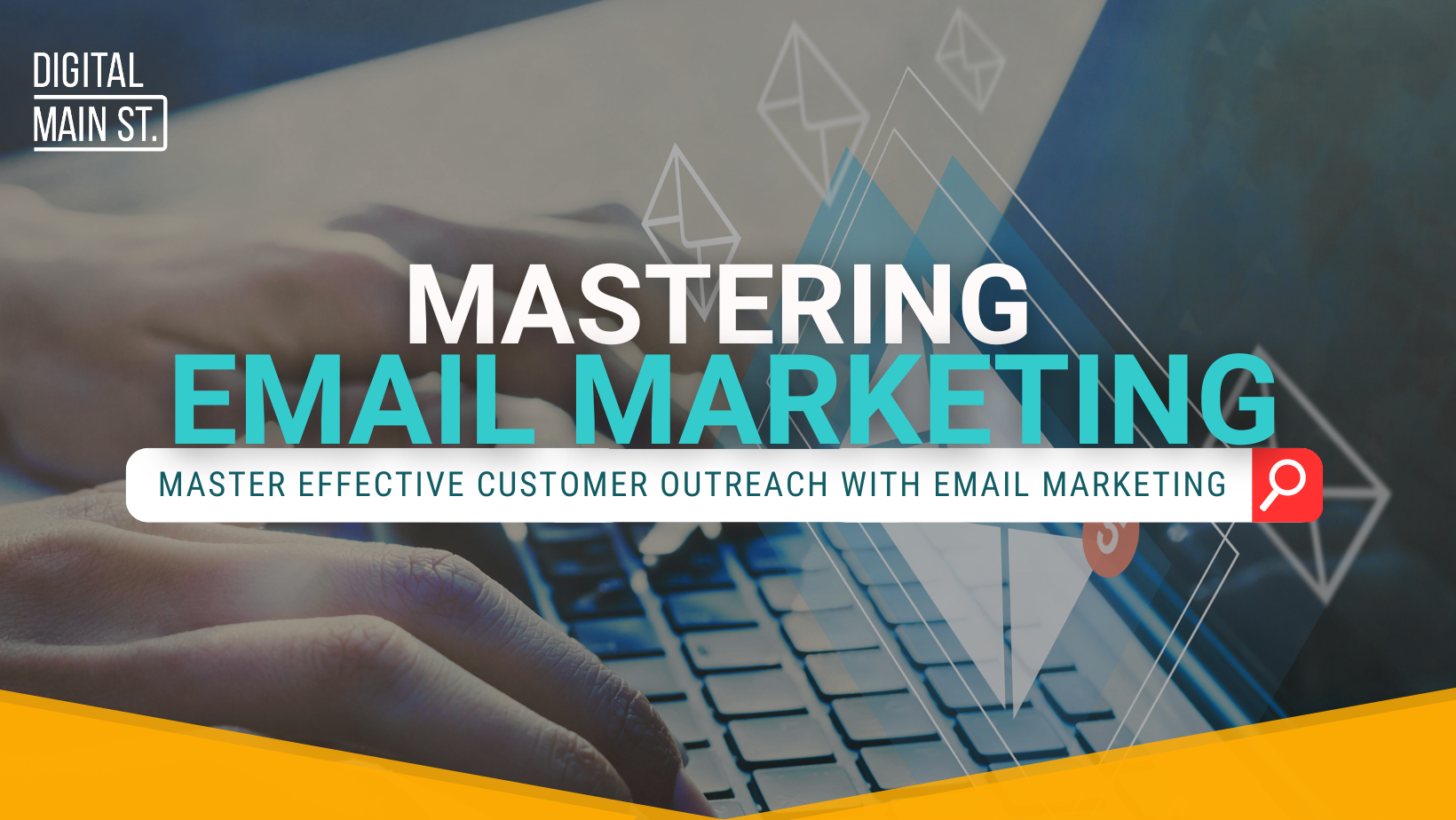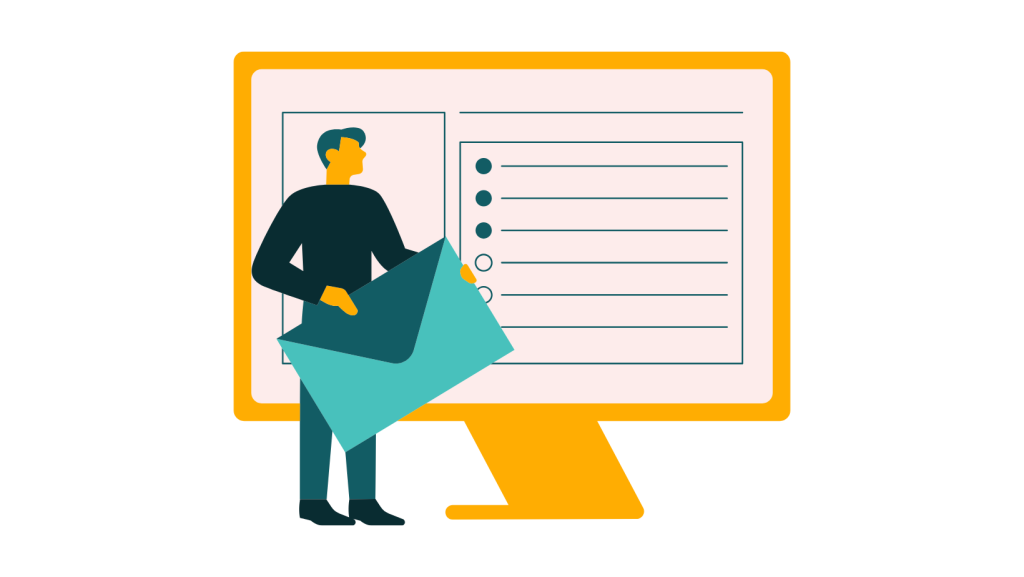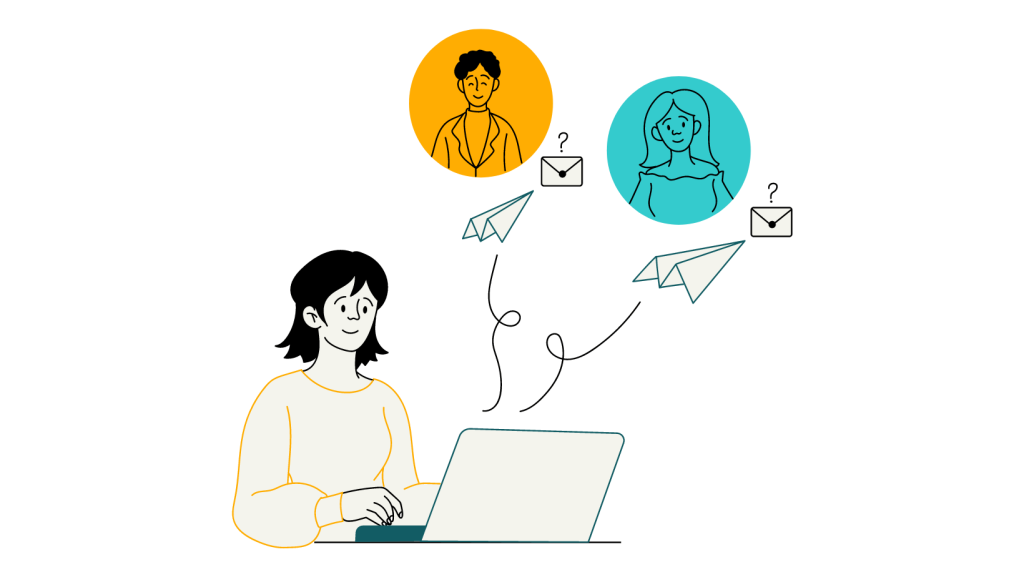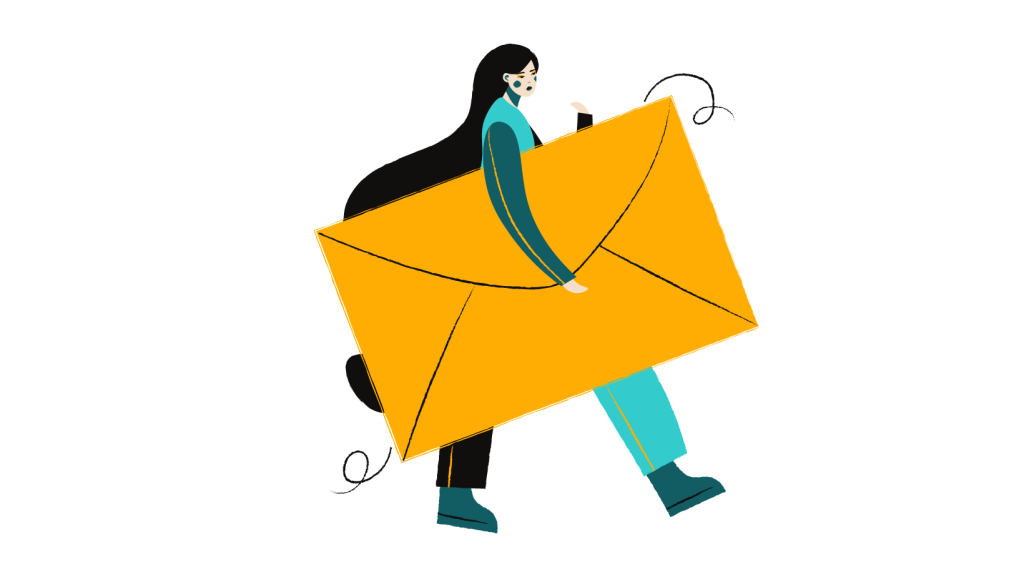
Master Effective Customer Outreach with Email Marketing (Pt 1)
So, you've probably heard a ton about email marketing, right? Maybe you're even subscribed to a few newsletters yourself. But have you ever wondered how to get started with email marketing for your own business? Don't worry, I’ve got you covered. In Part 1 of this blog, I'll provide a full introduction to email marketing, in a way that makes sense, gets you excited to hit “send”, and gets your customers looking forward to receiving your emails.

Why Use Email Marketing?
First, let me tell you a little story. I subscribed to an email blog once to unlock an article that provided insights to a project I was working on, thinking I would use the insights, immediately unsubscribe after I was done, and never look back. That was until an email came in with the subject line of “FREE CHOCOLATE INSIDE.” Did I click into it? Of course I did! Who doesn’t want free chocolate? However, as soon as that email opened, and the first line read “just kidding – but here’s something else you might enjoy,” I was filled with a whirlwind of emotions. What they did offer though, was better than free chocolate (at least to me). The email was carefully crafted and personalized with details on upcoming events, further insights and links to other blogs I was interested in, and highlights to what the company writing the blog had to offer. But remember, I had no interest in staying signed up for the email and probably wouldn’t have even opened it if it wasn’t for that captivating subject. Now, I’m hooked, and I read the blog every single time I get an email in my inbox.
This is what email marketing can do. Email marketing captures attention by leveraging compelling subject lines, personalized content, and eye-catching design to make a strong first impression and maintain engagement. Crafting intriguing and relevant subject lines entices recipients to open the email, while personalized messages and high-quality, valuable content keep their interest piqued. By using targeted offers and engaging, clean layouts, email marketing effectively grabs the reader's attention and encourages them to take the desired action, be it making a purchase, signing up for an event, or exploring new content.
For small businesses, an email marketing strategy is one of the most cost-effective ways to reach your customers directly. Instead of throwing ads out into the big wide world of social media, emails land directly into your customer’s inbox and allow you to have total control over the message. As a bonus, you can learn more about your customers by tracking who opens your emails, clicks on the links in the email, makes purchases and so much more.

Types of Email Marketing
Emails within a marketing campaign do not always have to be blogs or content-heavy newsletters, they can be integrated through your customer journey seamlessly using different tools. I’ve rounded up a list on how to utilize email marketing through all stages of the customer journey, divided into key marketing emails and behavioural emails, but keep in mind that although our list is big, yours does not have to be! It’s best to understand your own unique goals and audiences, and tailor your email campaigns to achieve your own marketing goals.
Emails to Engage with Your Customers
Newsletter Emails – To keep subscribers informed about company updates, industry news, or special content.
Key Features:
- Regular frequency (weekly, bi-weekly, monthly).
- Includes news, how-to articles, product updates, and curated content such as videos, blogs, articles, photos, podcast episodes, and much more.
- Focus on value and information rather than sales.
Promotional Emails – To promote products, services, events or special offers.
Key Features:
- Often include discounts, special offers, or product announcements.
- Designed to drive sales or conversions.
- Time-sensitive content.
Seasonal Campaign Emails – To leverage seasonal themes and holidays to promote products.
Key Features:
- Tied to specific holidays or seasonal events (e.g., Black Friday, Christmas).
- Often includes special promotions or limited time offers.
- Designed to capitalize on heightened consumer interest.
Product Update Emails – To inform customers about new products, features, or updates.
Key Features:
- Highlights new or improved products/services.
- Focuses on features, benefits, and how they solve user problems.
- Can include demonstrations or tutorials.
Emails Sent Based On Customer Action
Welcome Emails – To greet and onboard new subscribers or customers.
Key Features:
- Introduce your brand and set expectations.
- Sets a positive tone for future interactions.
- Allows customers to adjust what kind of emails they receive and how often they receive them.
- Can (and often does) include a special offer, guide, or information on where to find your website, social media profiles, store hours, and more.
Transactional Emails – To confirm transactions and provide relevant details.
Key Features:
- Includes order confirmations, shipping notifications, and account updates.
- Typically triggered by user actions on a website.
- High open-rates due to immediate relevance.
Lead Nurturing Emails – To build relationships with potential customers who have shown interest.
Key Features:
- Personalized content based on user behavior.
- Focuses on moving leads through the sales funnel.
- Educational and informative, leading to a purchase decision.
Abandoned Cart Emails – To remind customers of items left in their shopping cart.
Key Features:
- Sent when a user leaves items in their online shopping cart without completing the purchase.
- Includes reminders and often a discount to encourage purchase.
- Highly personalized and time sensitive.

I told you the list was big! But don’t panic. Unn important thing to note is, the behavioural emails can be created to be sent automatically through transactions or actions made by your customers on your website. In most cases, these emails are built into e-commerce platforms such as Shopify to automatically get sent to customers based on behaviours such as abandoning their cart or confirming their order. You can also use tools such as Mailchimp’s Customer Journey Builder to create and send the emails within this strategy and customize these emails to give a personal touch to all your customer communications.
How To Get People Subscribed?
Before you start an email campaign, of course you’ll need a subscriber list so you have people to send your carefully crafted emails to. But how do you entice visitors to sign up for your emails? I’ve created a Top Tips & Tricks list below to help you get started!
1. Offer Irresistible Incentives
One of the most effective ways to encourage email sign-ups is by offering incentives that potential subscribers can’t resist. These incentives can range from discounts and exclusive access to special promotions, to freebies and downloadable content. For example, free chocolate! (Except, you may want to actually give them the chocolate this time…) This not only motivates users to sign up but also gives them an immediate benefit for doing so.
Another enticing incentive is exclusive content or access. For instance, if you do run a chocolate shop, you could offer early access to new product launches or special members-only sales. This makes subscribers feel valued and gives them a reason to stay connected.
2. Use Eye-Catching Pop-Ups and Sign-Up Forms
Pop-ups can be a double-edged sword, but when used wisely, they are incredibly effective for collecting email addresses. Add pop-ups that appear at strategic moments, such as when a user is about to leave the site (exit-intent pop-ups) or after they’ve spent a certain amount of time browsing. Ensure that these pop-ups are visually appealing and clearly communicate the benefits of signing up.
In addition to pop-ups, place sign-up forms in multiple locations on your site. The homepage, blog, and checkout page are prime real estate for capturing emails. Make sure these forms are easy to fill out and don’t ask for too much information upfront. A simple request for an email address and first name is often enough to get started.
3. Highlight the Benefits of Signing Up
Be clear about what subscribers will gain from joining your email list and outline the benefits, such as receiving exclusive discounts, access to special events and early product releases, or insider tips and news. An online fitness store, for example, could emphasize that subscribers will receive weekly workout plans, healthy recipes, and special discounts on fitness gear.
Creating a sense of urgency can also drive sign-ups. Use language that encourages immediate action, such as “Sign up now to get 20% off, today only!” or “Limited time offer – exclusive deals for subscribers!” This makes potential subscribers feel they need to act quickly to take advantage of the offer.
4. Leverage Social Proof and Urgency
People are more likely to take action when they know others have done the same. Display social proof by showcasing the number of current subscribers or highlighting positive feedback from them. For example, you could include a statement like, “Join 10,000 other fitness enthusiasts and get the latest tips and deals delivered to your inbox.”
You can also consider including testimonials or quotes from current subscribers who have benefited from your emails. This social proof can be a powerful motivator for new visitors who are on the fence about signing up.
5. Ensure a Smooth Sign-Up Process
The sign-up process should be seamless and quick. As mentioned, avoid asking for too much information initially. Ensure your sign-up forms are mobile-friendly, as most users will access your site from their phones.
After sign-up, send a welcome email that thanks the new subscriber and delivers any promised incentives, such as a discount code or free download. This not only makes a great first impression but also sets the tone for future communications.
By implementing these tips and tricks, you can significantly boost the number of email sign-ups on your ecommerce site, creating a valuable channel for engaging with your customers and driving sales.

Wrap Up
And there you have it – an introductory look into email marketing! By understanding your audience and creating engaging, personalized content to share with your customers by email, you can build stronger relationships and drive more sales. Whether you’re running a blog like this one or an online boutique, email marketing is a tool you can’t afford to ignore.
Ready for the next step in your email marketing journey? Check back for Part 2 of Mastering Effective Customer Outreach with Email Marketing where we show off tools that can help build that list, craft those emails, and build campaigns – all while you watch your small business grow!
Happy emailing! 
To learn more about digital transformation and e-commerce, check out our virtual events tailored for small businesses.

